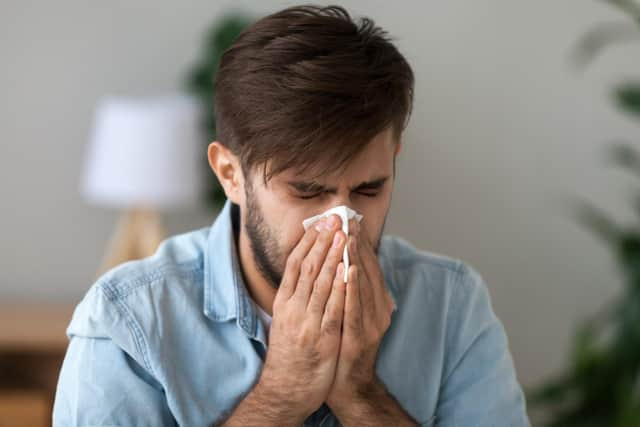Only sporadic cases of flu with no widespread circulation yet, says PHA
and live on Freeview channel 276
Flu remained below the baseline epidemic level over the November 13-19 period according to the Public Health Agency’s (PHA) latest weekly surveillance bulletin.
However, respiratory syncytial virus (RSV), a common winter virus that causes bronchiolitis in children and coughs and colds in adults, is on the rise.
Advertisement
Hide AdAdvertisement
Hide Ad"In week 46, influenza activity remained at baseline levels with sporadic cases notified. There does not appear to be widespread circulation in the community yet.


"RSV activity continued to rise in the majority of indicators, driven by increases among younger children,” the PHA said.
The GP flu/flu-like illness (FLI) consultation rate was 3.7 per 100,000 population.
There were 10 unique episodes of influenza identified. For RSV, there were 150.
Advertisement
Hide AdAdvertisement
Hide AdEight samples were submitted to the Regional Virus Laboratory (RVL) for testing for flu or RSV. None were positive.
Of 1,146 samples submitted for testing to laboratories across the North, however, nine were positive for flu (0.8% positivity).
An analysis shows two were of the A(H1N1) 2009 strain that mutated from pigs and infected humans during the 2009 'swine flu' pandemic but which is now a normal seasonal flu.
Of the nine positive samples, two were Flu A(H1N1), one was Flu A(H3), three were Flu A(not subtyped) and three were Flu B.
Advertisement
Hide AdAdvertisement
Hide AdOf 912 samples submitted for testing to laboratories across the North for RSV 161 tested positive (17.7% positivity).
One respiratory outbreak within a care home setting was reported over the week.
Three community-acquired emergency influenza hospital admissions were recorded. For RSV, there were 89.
“The average number of daily cases of community-acquired emergency influenza inpatients remains low. For RSV, the average number of daily cases has increased.
Advertisement
Hide AdAdvertisement
Hide Ad“87 respiratory associated deaths out of 364 all-cause deaths were reported (23.9%),” the PHA bulletin states.
The update was published prior to the announcement on Monday that the UK Health Security Agency (UKHSA) had detected a single confirmed human case of influenza A(H1N2)v in North Yorkshire.
Influenza A(H1N2)v is similar to flu viruses circulating in pigs in the UK. It was the first of this strain of flu in a human in the UK.
The individual experienced mild illness and has recovered.
Meera Chand, Incident Director at UKHSA, said: "We are working rapidly to trace close contacts and reduce any potential spread. In accordance with established protocols, investigations are underway to learn how the individual acquired the infection and to assess whether there are any further associated cases.”
Advertisement
Hide AdAdvertisement
Hide AdH1N1, H1N2 and H3N2 are major subtypes of swine influenza A viruses in pigs and occasionally infect humans.
There have been a total of 50 human cases of influenza A(H1N2)v globally since 2005; none related genetically to this strain.
Human infections with swine flu occur sporadically.
The infection detected in the UK is different from recent human cases of influenza A(H1N2) but similar to viruses in UK swine.
In 2009, influenza A H1N1(pdm09) resulted in the ‘swine flu’ pandemic. That virus contained genetic material from viruses circulating in pigs, birds and humans in the 1990s and 2000s.
Advertisement
Hide AdAdvertisement
Hide AdInfluenza A H1N1(pdm09) is now seasonal and no longer referred to as ‘swine flu’. It is distinct from the viruses currently circulating in pigs.